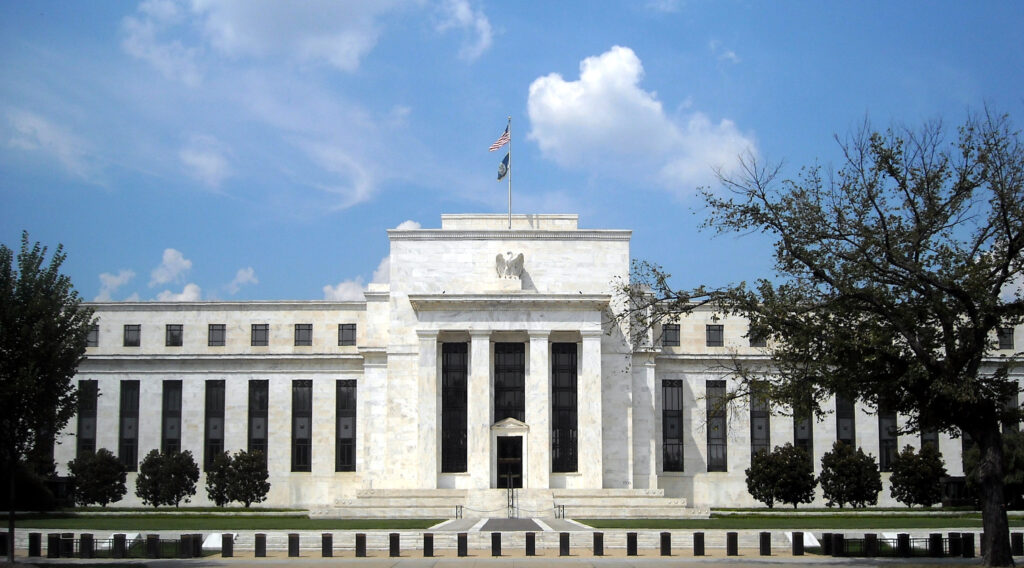Main Points
- Arthur Hayes predicts a potential crash in risk assets, including cryptocurrencies, following the FRB rate cut.
- Ethereum, Ethena’s USDe, and Pendle’s BTC staking could benefit from a low-interest rate environment.
- Demand for tokenized government bonds may weaken if interest rates remain low.
- The era of central banks is over as governments gain control of currency issuance.
- Cryptocurrencies could emerge as the most transportable and unrestrictive assets globally.
The Looming FRB Rate Cut and Its Ripple Effects
Arthur Hayes, the co-founder of BitMEX and Chief Investment Officer of Maelstrom, issued a bold prediction that the era of central banking is coming to an end. Speaking ahead of the anticipated interest rate cut by the Federal Reserve (FRB) on September 18, 2024, Hayes warned of a potential crash in risk assets, including cryptocurrencies, due to the cut. Hayes’ analysis, shared in an exclusive interview during the Token2049 conference in Singapore, outlines a complex relationship between interest rates, inflation, and the future of decentralized finance (DeFi) markets.
Impact of FRB Rate Cuts on Cryptocurrencies
With the FRB expected to announce its first rate cut since 2020, many are predicting a renewed cycle of liquidity easing. Historically, such cycles have been favorable for Bitcoin (BTC), signaling bullish trends in the market. However, Hayes foresees potential pitfalls. He suggests that the rate cut will not only worsen inflation but could also lead to a surge in the value of the yen, causing risk aversion across markets.
Hayes is particularly concerned about the continued inflationary pressure in the U.S., exacerbated by government actions. He argues that making borrowing cheaper will only fuel further inflation, leading to long-term market instability. This could have ripple effects on the global economy, particularly in countries like Japan, where changes in interest rates could drive significant capital flows into and out of cryptocurrencies.
U.S.-Japan Interest Rate Disparity: The Key Market Driver
One of the major risks Hayes highlights is the narrowing interest rate gap between the U.S. and Japan. The Bank of Japan’s recent moves, such as raising its lending rate from 0% to 0.25%, have already caused market turbulence, with Bitcoin prices dropping significantly. Hayes believes that further changes in the U.S.-Japan rate differential could prompt a substantial unwinding of yen carry trades, which could have adverse effects on both global markets and cryptocurrencies.
Despite most analysts predicting that the Bank of Japan will raise interest rates further, Hayes sees the U.S. moving in the opposite direction, cutting rates back to near zero. This policy divergence could force investors to exit risk positions financed through yen loans, leading to further volatility in both fiat and crypto markets.
Hayes’ Vision: Zero Rates and Central Bank Irrelevance
In Hayes’ view, the initial reaction to the FRB’s rate cut will be negative, as investors and markets digest the implications of the move. However, he believes that central banks will have little choice but to keep cutting rates to mitigate the economic crisis. Eventually, he expects U.S. interest rates to approach zero, further fueling risk appetite among investors, especially in high-yield sectors like cryptocurrencies.
As rates approach zero, institutional and retail investors may shift their focus toward yield-bearing assets like Ethereum (ETH) and decentralized finance platforms such as Ethena’s USDe and Pendle’s BTC staking. Hayes believes that Ethereum, offering staking yields of around 4% annually, could benefit significantly in this low-rate environment. Similarly, Pendle’s BTC staking, which offered a variable yield of 45% as of last week, could become increasingly attractive.
Declining Demand for Tokenized Government Bonds
While decentralized finance markets may flourish, Hayes is skeptical about the future of tokenized government bonds. He predicts that demand for these interest rate-sensitive assets will weaken as rates drop. Investors, seeking higher returns, will likely move their capital toward more profitable opportunities in the cryptocurrency space, further accelerating the growth of DeFi ecosystems.
Central Banks Losing Relevance: The End of an Era
In recent years, market strategists like Russell Napier have argued that governments are gaining control of currency issuance, effectively sidelining central banks. According to Napier, governments of developed nations are now focused on reducing debt-to-GDP ratios by controlling inflation and stimulating key sectors such as manufacturing. This shift marks the end of central banks’ relevance as monetary policy-makers.
Hayes echoes Napier’s sentiments, asserting that the age of central banks is coming to a close. In his view, politicians will increasingly take control, directing banks to provide targeted liquidity to specific sectors. This transition could lead to varying forms of capital control, with both soft and hard restrictions becoming more common.
Cryptocurrencies as the New Global Asset
In this new world, Hayes sees cryptocurrencies as the only truly portable and unrestrictive assets. Unlike fiat currencies, which are subject to capital controls, cryptocurrencies can be transferred globally with minimal restrictions. As governments and central banks impose more stringent regulations on traditional financial systems, cryptocurrencies could become the go-to asset for investors seeking to escape these limitations.
For Hayes, the global financial system is at a turning point, and cryptocurrencies stand to benefit. As the only assets that can be moved freely across borders, they may become increasingly attractive to investors looking for alternatives to traditional fiat currencies and government-issued bonds.

The Future of Cryptocurrencies in a Post-Central Bank World
Arthur Hayes’ insights offer a glimpse into a future where central banks play a diminished role in global finance. As governments take control of currency issuance and capital regulation, cryptocurrencies may emerge as the most valuable and unregulated assets on the market. Ethereum, DeFi platforms like Ethena’s USDe, and Pendle’s BTC staking are well-positioned to thrive in this environment.
However, the road ahead is fraught with uncertainty. The narrowing interest rate gap between the U.S. and Japan could trigger market volatility, and the long-term effects of FRB rate cuts remain unclear. What is certain, though, is that the financial landscape is changing, and cryptocurrencies are poised to play a central role in this transformation.


